It can be hard to get started with sketching. Usually it’s simple enough to get all kinds of tools, theorize about all the materials you will need, but usually they are only a stand-in that you believe you will need for making great art. When you actually have a great sketchbook, and all kinds of awesome drawing and painting supplies, your reaction might be one of fear and insecurity. Where do you start? How do you make sure your sketches will turn out great? How not to ruin this pristine sketchbook?
Let’s take a look at how to find the courage to start sketching, or any creative routine. This is not about the materials for journaling (you will find recommendations for this all over my blog), but about the psychological frame of mind that will make it easier to get started.
Here’s a video version of this post with some relaxing painting activity while I talk:
Starting a sketchbook practice – overcoming fear | pep talk (video)
I hear from a lot of beginners that they’re afraid to mess up, or don’t have enough courage to start.
Let me tell you more about sketchbooks, and journaling, and especially nature journaling, and you don’t need to be afraid of starting a sketchbook.
Your sketchbook is for exploration, enjoying your creativity, and making mistakes. Yes, that’s right, you are not only allowed to mess up, but you definitely should make mistakes in your sketches. First, you can almost always fix mistakes. And second, you will learn so much from each of them. It’s how we learn as humans, and acquiring sketching skills works no differently.
Another idea that I would like to give you is to make it more about the thing you’re exploring. When you observe and explore nature, this is the main attraction. Be curious and try to find out how something works, or what it does, and it’s not so important how well you can draw. It’s more about the moment of curiosity. Or maybe you want to keep the memory of an outstanding moment, or of gratitude. Gratitude lists are awesome for art journaling, or species lists of animals that you encountered if you prefer a more scientific approach. You can add elements like text or color scales to your sketchbook, color mixing experiments or collage elements or abstract studies that don’t require any realism. Your early realistic studies might look “wrong” or “failed” in your eyes, but is again a great opportunity for practice and learning – always keep notes about what didn’t work too, but don’t be a harsh judge, be gentle to yourself. Keeping a sketchbook is all about finding creative ways of expression. Just because I don’t show these kind of things doesn’t mean you can’t. Do what you feel comfortable with, and challenge yourself a bit too, and over time you will see that you make progress.
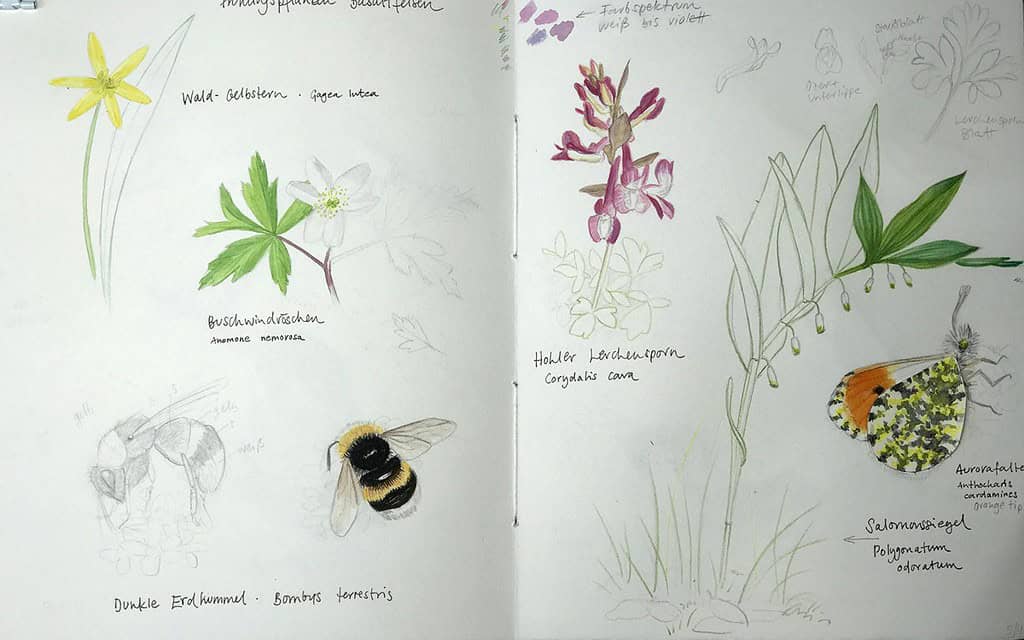
Don’t use the same judgement for what you see on my blog and what you expect from yourself if you’re just starting out and have never had any formal art training. I know it can feel intimidating. Keep in mind I mostly show you the pages I didn’t mess up, and that I’ve been doing this stuff for a few years. I’ve needed to make money with my drawing skills, that is very different from someone who wants to enjoy a creative hobby. I’m all for regular practice and learning the basics though, so don’t let this hold you back. If you want to learn how to draw and paint realistically, you can. It is not that hard if you practice and make it a regular habit. You can definitely learn this! I used to say I couldn’t really draw when I was younger, and it seemed to be so much more natural for other people, but this was because they just did it a lot.
Still, the first thing I want you to be mindful of when starting to sketch is your own motivation. Ask yourself if you want to please your perfectionism, or if you want to learn something new about nature, or if you want to keep a visual record of your life. It doesn’t really matter so much if something is pretty and perfect if it gives you a pleasant memory. When I go through old sketchbooks, I see some technical mistakes, yes. But I also remember so much about each of the days and encounters that I chose to sketch, and this is worth much more to me. From the mistakes I can see how much I’ve learnt since then, but the notes and sketches I’ve made remind me of the beautiful details I wanted to explore on that particular day. And that is what I want to keep.
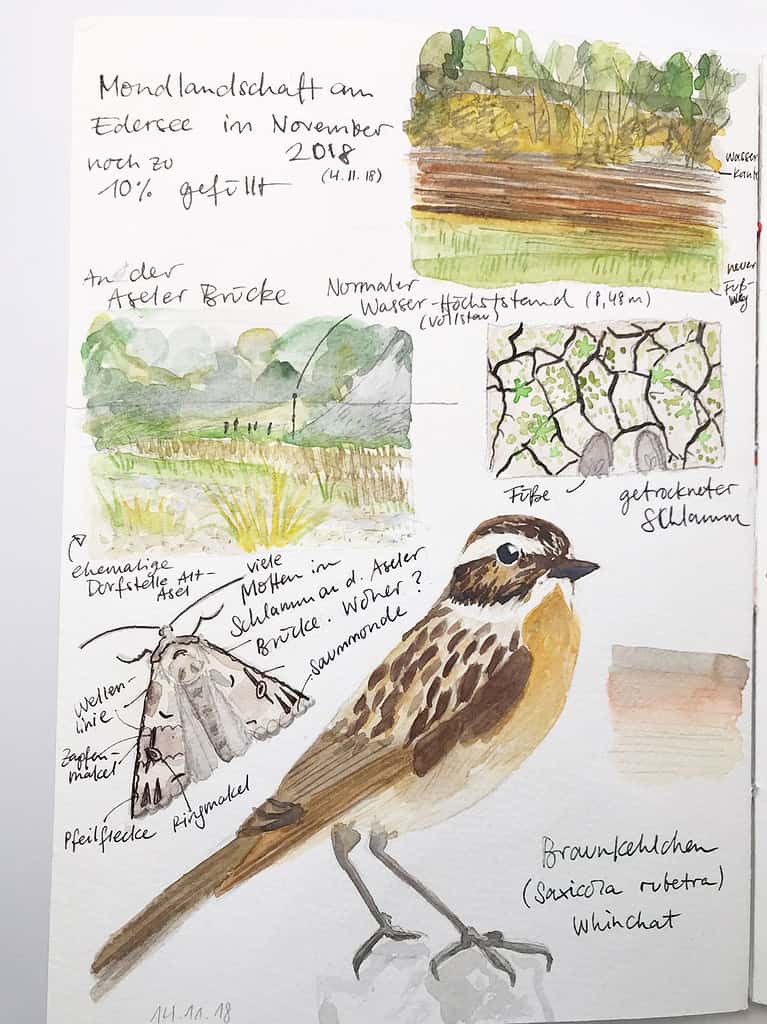
If you’re still a bit intimidated by starting a new sketchbook, there are techniques to make it easier. I probably don’t show these often enough. If you don’t want to mess up the first page of your nice and new sketchbook, then intentionally mess it up. Make a mark, add your name and email address (in case you lose it), let it be a doodle page for testing your tools, paint out your palette, or just dedicate it to some informal sketches to start your session each day. I used to do these small weather thumbnails as the first page of my sketchbooks. I wasn’t always using great paper, and I wasn’t that great at my painting technique, but that didn’t matter. Looking at the sky and watching the clouds, and just mixing a few pigments together was very soothing for me and often I felt that was all I could do on that day. And yet, often this was the starting point for another small sketch, and then another one. And on some days, this works well, and on other days, it doesn’t. That’s fine. In the end, it’s your sketchbook. No-one should judge you. You’re not required to share it with anyone, and it’s for you to like, not for someone else to like.
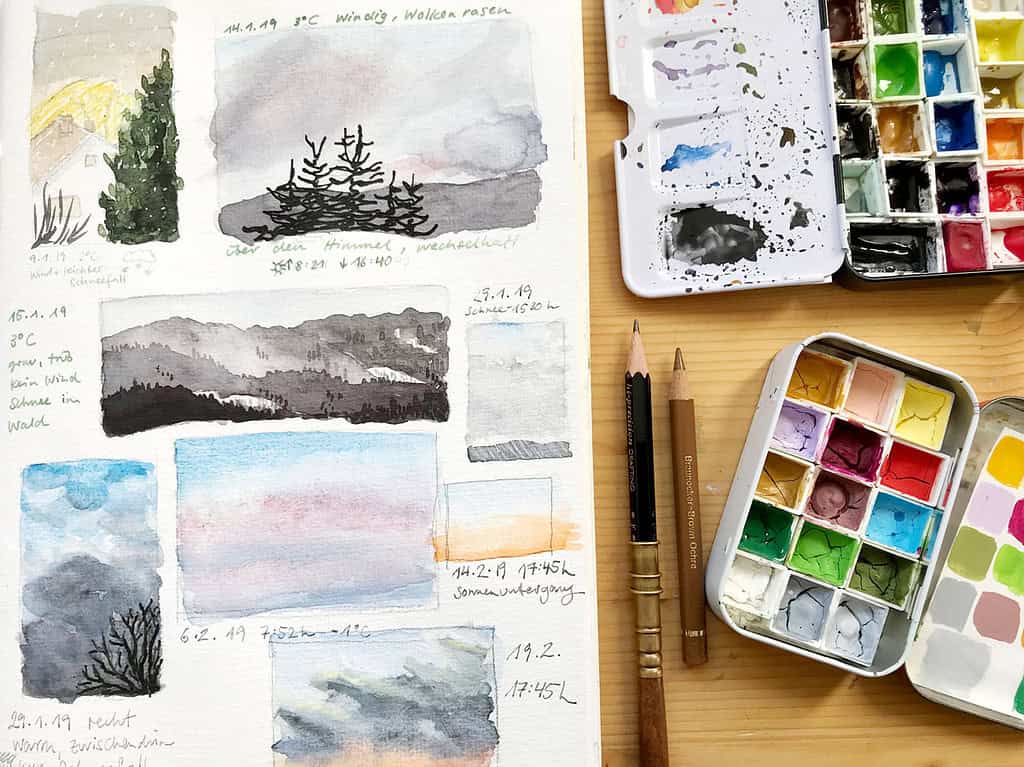
Each sketch can be a study, don’t be afraid of messing up, instead put a note next to it. you don’t need to fill pages with perfect paintings. If you don’t like the results of what you do, that’s not a problem, you can sit down and acquire the skills to make your sketches better. It’s not witchcraft or talent, it’s just a manual skill that needs a bit of time and practice.
I hope this was the kind of pep talk you needed if you’re hesitant about starting a sketchbook or a journaling practice. I know it can feel intimidating, but don’t make it about the art and the technique in the beginning, make it about finding stuff out, or about things that move or interest you.
One more tip: I’ve heard from a lot of people that buying excessively expensive and high-quality materials has held them back from actually using them. So either get middle-priced materials that still have good quality and will allow you to make progress, or jump in and use those precious supplies. They will not get any better when they’re sitting around waiting for the best opportunity or the perfect picture. Because with sketching and painting, that might never come, and each new day is just the attempt to reach it.
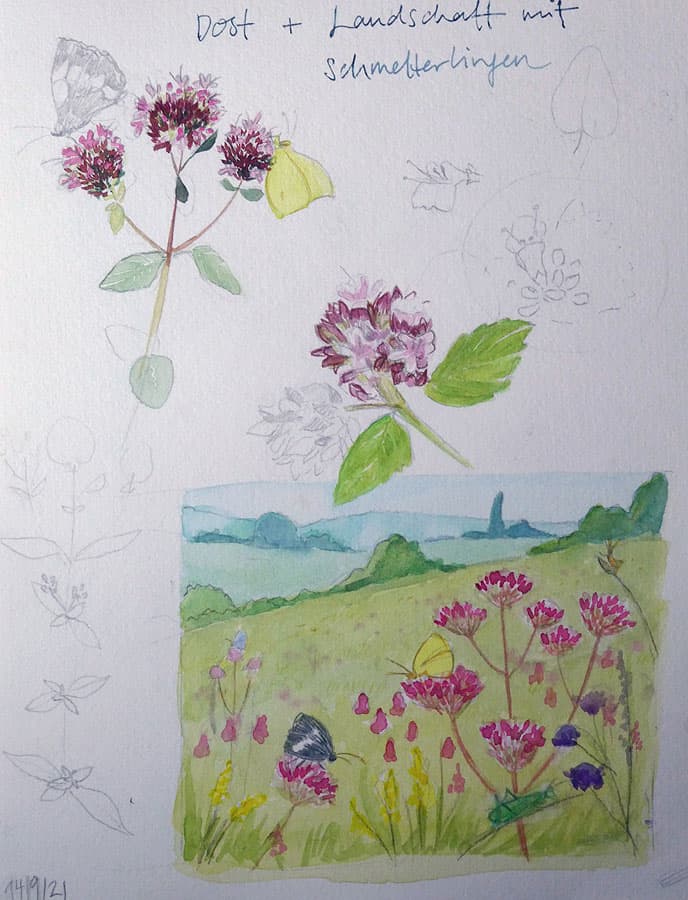
Thank you for reading this blog! It'll always stay free. To keep it going, you can support my work directly through a donation or through my nature sketching classes.
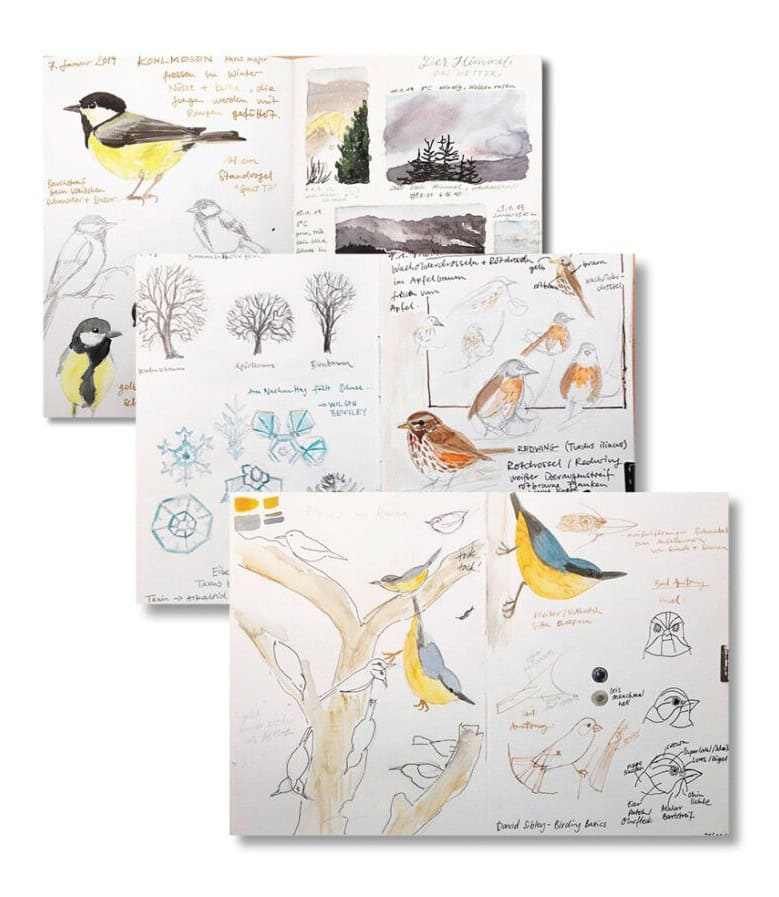
Join my free newsletter and never miss a blog post! You'll get new blog post notifications directly to your inbox. Receive 5 great sketching resources as a welcome gift for joining my newsletter! Here's what's inside:
- How to draw anything (PDF guide)
- Getting started with watercolor (free ebook)
- My favorite tips for creating great sketchbook pages
- My 5-step guide for drawing birds (PDF guide)
- My current watercolor palette layout (PDF guide)
By subscribing, you agree that I may process your information in accordance with my privacy policy

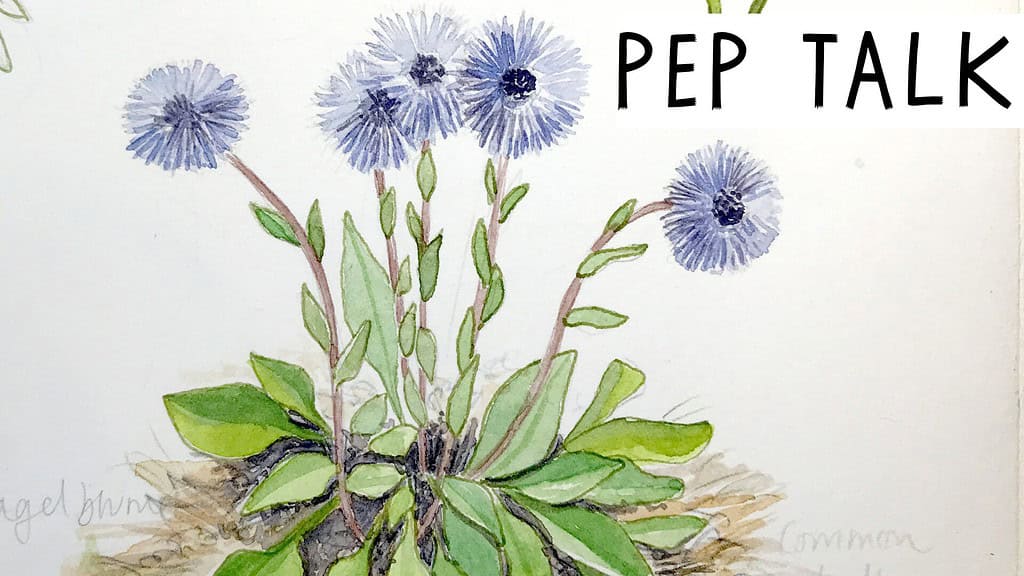
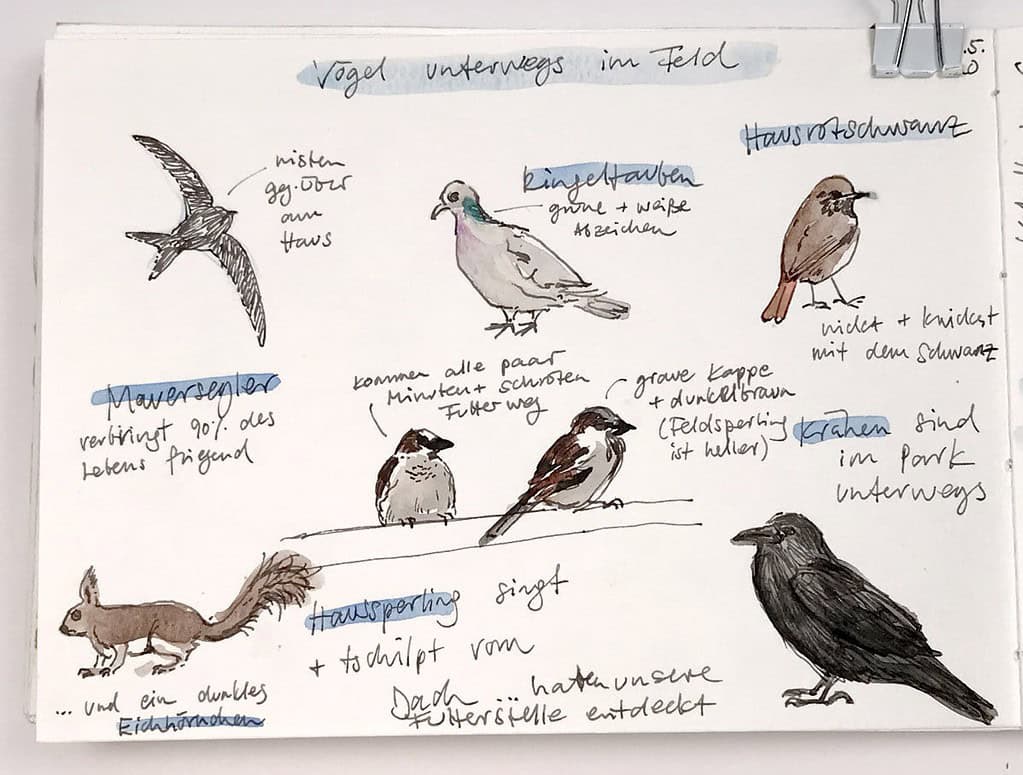

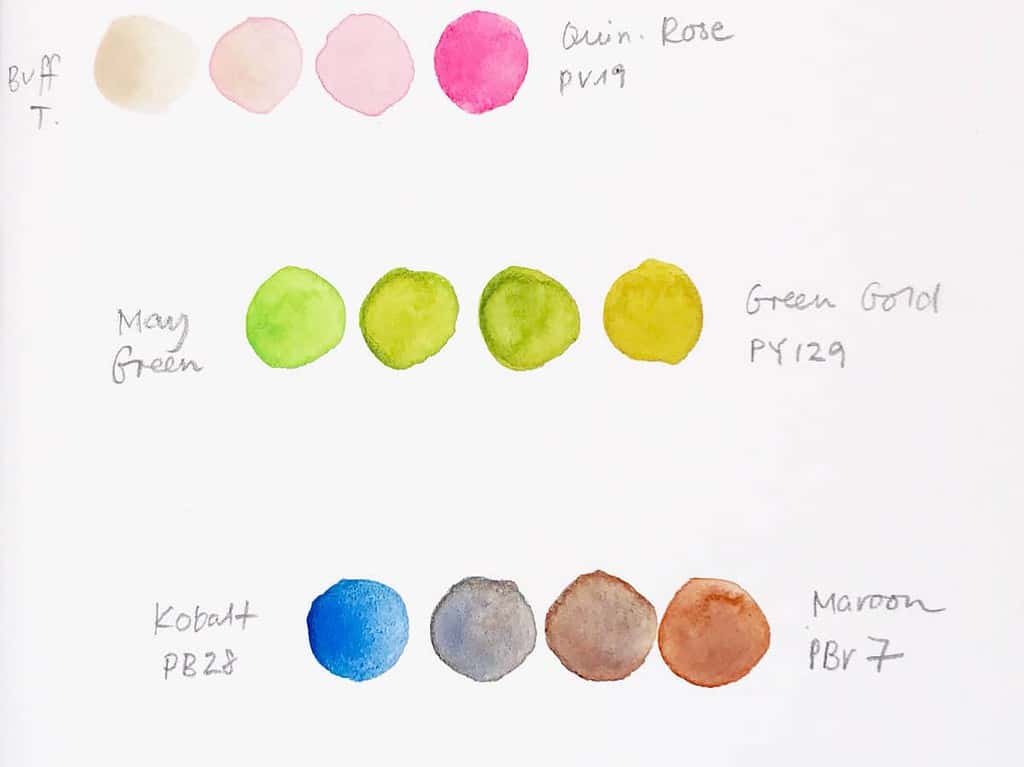
Thank you so much for sharing this. I often have to remind myself to make the art for myself first and foremost which absolutely frees me up to play and enjoy the process. I loved the video as well-I really enjoy watching you paint 🙂
Thank you Michelle, yes, I think we all have to remind ourselves about this from time to time. 🙂
I so appreciate all you do to help those of us who are just starting a journey that we have wanted to do for so long. I am retired now so it is time to get started.
Enjoy the journey, Jean! There is so much to discover, I wish you all kinds of wonderful encounters and creative moments!
Great reminders! Thank you!
You’re welcome! 🙂
Thank you Julia, I love your Drawing Fundamentals course and the gentle way you teach. There is a word in this blog post that I think I can use – “courage”. Do I have the courage? Yes I can certainly find some. This seems to me to be a positive approach. Thanks.
When I did a certificate writing course we were advised to keep a journal of free-writing which involved writing the first thoughts that came into our head and to keep writing for 5 to 10 minutes each day. It involves one’s feelings and inspires further creative thinking. I have no problem doing this; I love it. I tried to approach art this way but I still blocked. I think with art I need to add some courage. And I have begun, since doing your course, to draw just small parts of leaves or flowers or anything else I see outside in nature, on a daily basis, just for a short time. I find the observation and feelings this involves, satisfying. For me, I have to take a particular element from free-writing and transfer it to daily free-art, and that is my free-art does not have to make sense to anyone but me, and to concentrate on the dimensions of experience and feelings.
Thank you for your en-courage-ments.
Sandra, you put this so beautifully, thank you! I’ve never thought about how the word encouragement is put together, it’s actually similar in German (Ermutigung – Mut means courage). I like how you have adapted the free-writing approach to making art, and you’re exactly right, what you explore in your sketches doesn’t have to make sense to anyone, it’s something for you. 🙂